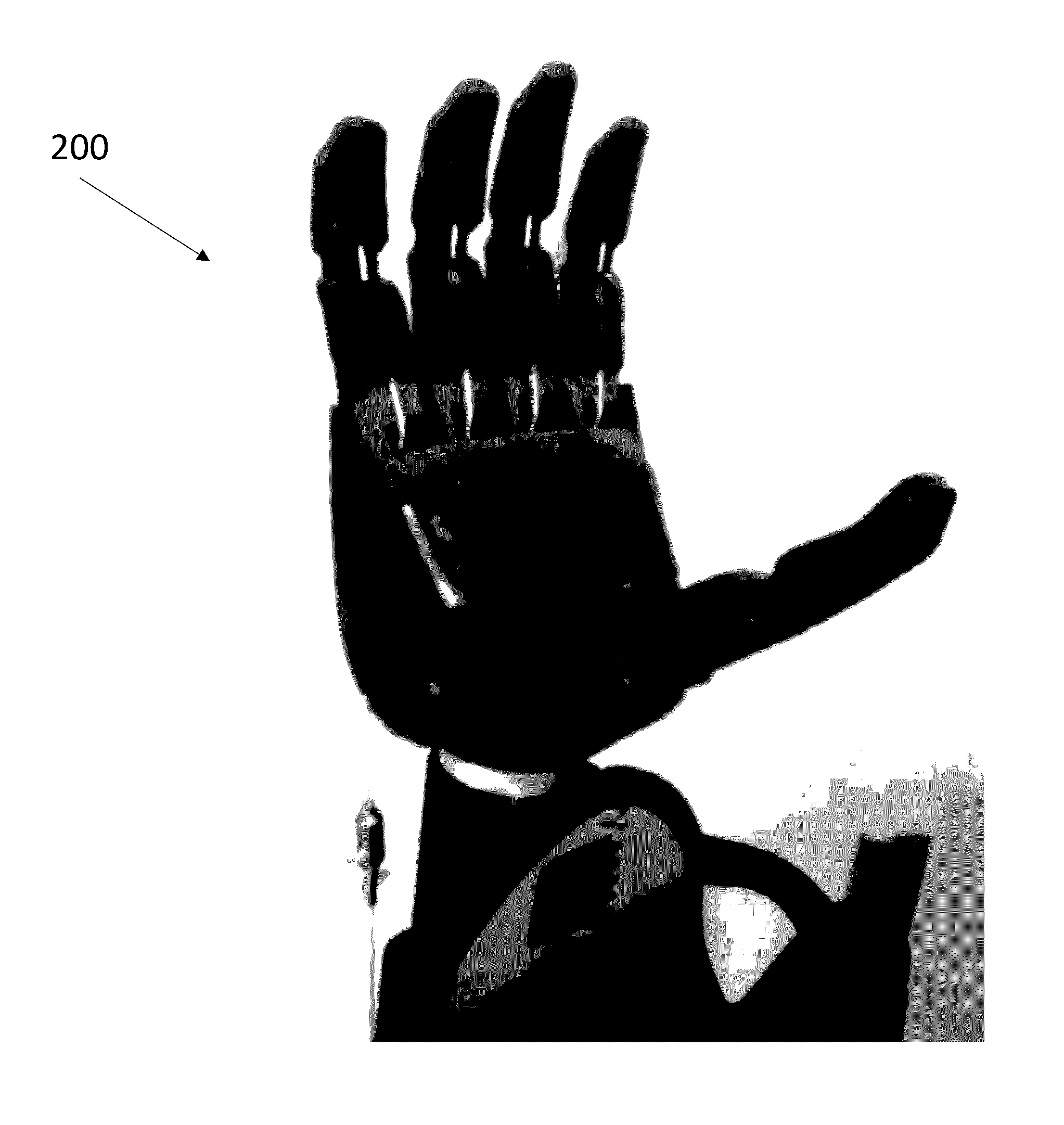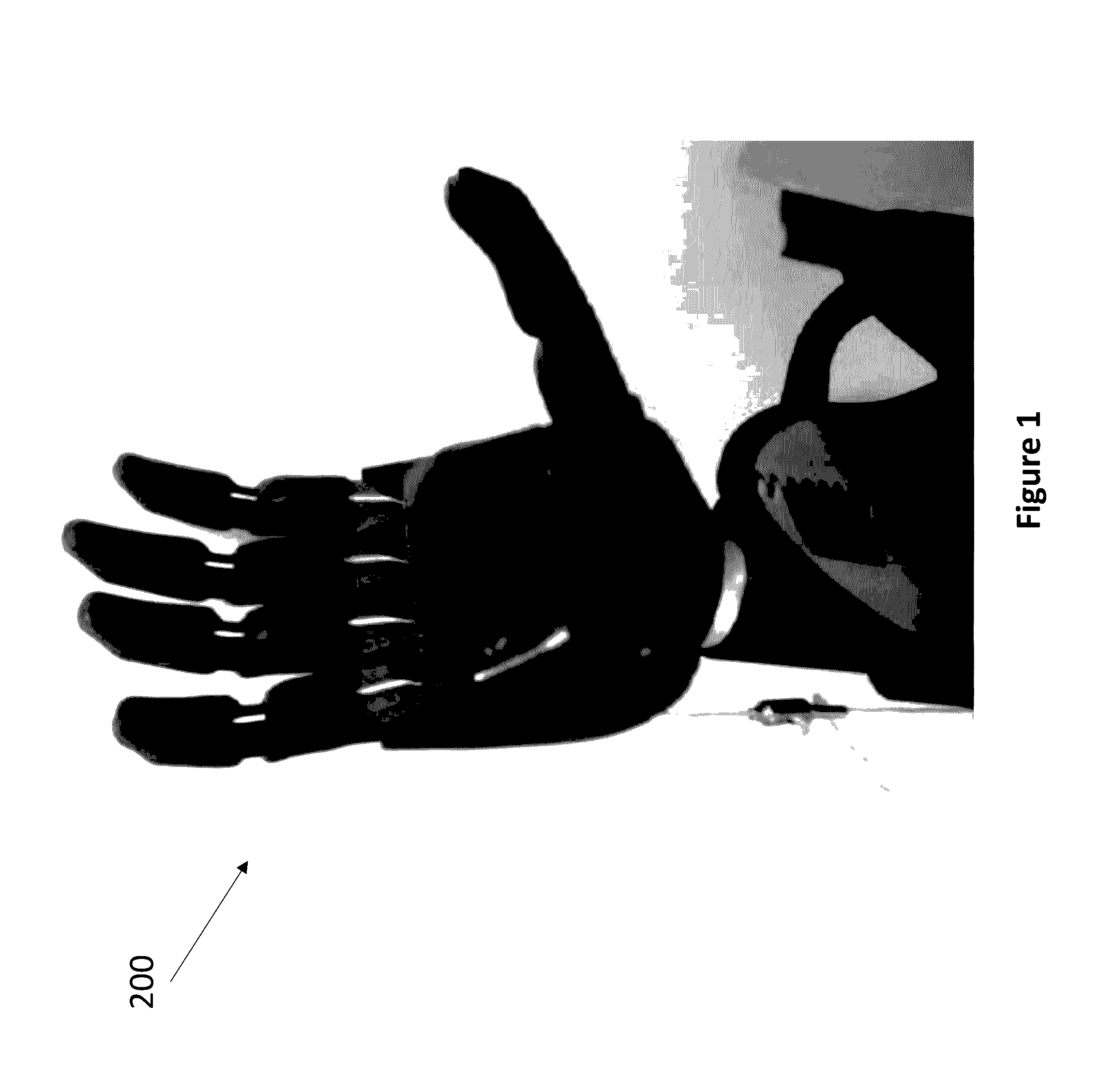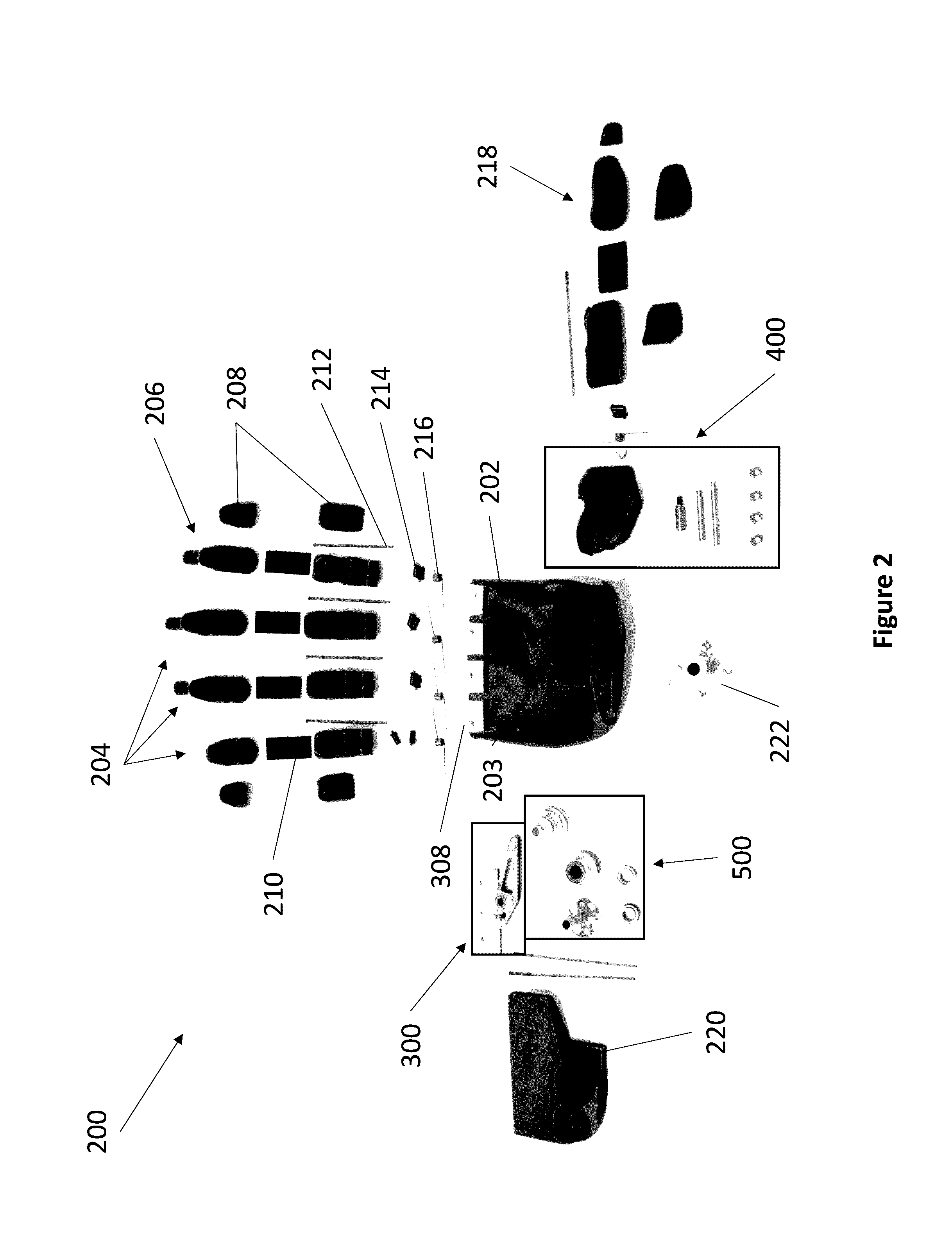Multi-Grasp Prosthetic Hand
a prosthetic hand and multi-grasp technology, applied in the field of multi-grasp prosthetic hands, can solve the problems of limited freedom of operation of body-powered devices, the distribution of force from body-powered cables to the five fingers, and the difficulty of users of myoelectric hands to modulate grip for
- Summary
- Abstract
- Description
- Claims
- Application Information
AI Technical Summary
Benefits of technology
Problems solved by technology
Method used
Image
Examples
experimental examples
[0111]The invention is further described in detail by reference to the following experimental examples. These examples are provided for purposes of illustration only, and are not intended to be limiting unless otherwise specified. Thus, the invention should in no way be construed as being limited to the following examples, but rather, should be construed to encompass any and all variations which become evident as a result of the teaching provided herein.
[0112]Without further description, it is believed that one of ordinary skill in the art may, using the preceding description and the following illustrative examples, make and utilize the compounds of the present invention and practice the claimed methods. The following working examples therefore, specifically point out the preferred embodiments of the present invention, and are not to be construed as limiting in any way the remainder of the disclosure.
example 1
The Body-Powered Anthropomorphic Prosthetic Hand, Mechanical Coupling Methods
[0113]The following example demonstrates the development of a prosthetic hand featuring a mechanical coupling mechanism that enables proper force distribution from a body-powered cable to the four fingers of the hand for both a power and precision grasp. This variation in grasping behaviour is selected through a mechanical lever placed on the outside of the hand. By placing this lever on the side of the hand, the user can simply switch between power and precision grasp situations using an able hand or by contact with another object in the environment such as a table edge. The following example also demonstrates a mechanical coupling method tuned for lateral, precision, and power grasps similar to those achieved in the current state-of-the-art prosthetic hands but achieved mechanically for use in body-powered devices.
Adaptive Grasping Behavior
[0114]By coupling the fingers together though a differential mecha...
example 2
Fabrication of Lightweight Custom Composite Prosthesis Using Additive Manufacturing Molding Techniques
[0128]Additive manufacturing, or 3D printing, has become a widely accessible and cost-effective method of prototyping due to its ability to quickly create custom modeled parts out of inexpensive thermoplastics and resins. A common method of additive manufacturing, fused deposition modeling (FDM), uses an extruder head that lays down a filament in discretized layers to create a final part. The thermoplastic filament, acrylonitrile butadiene styrene (ABS), is commonly used in this process due to its high impact resistance, toughness, and light weight. This has made 3D printed ABS a prevalent choice for open-source prosthesis hands with products like the Cyborg-Beast or the Raptor Hand (Zuniga J et al., BMC Research Notes, 2015, 8(1):10; Enabling the Future: Upper Limb Prosthetics. Available: http: / / enablingthefuture.org / upper-limb-prosthetics Mar. 25, 2015). The modularity and variety...
PUM
 Login to View More
Login to View More Abstract
Description
Claims
Application Information
 Login to View More
Login to View More - R&D
- Intellectual Property
- Life Sciences
- Materials
- Tech Scout
- Unparalleled Data Quality
- Higher Quality Content
- 60% Fewer Hallucinations
Browse by: Latest US Patents, China's latest patents, Technical Efficacy Thesaurus, Application Domain, Technology Topic, Popular Technical Reports.
© 2025 PatSnap. All rights reserved.Legal|Privacy policy|Modern Slavery Act Transparency Statement|Sitemap|About US| Contact US: help@patsnap.com



